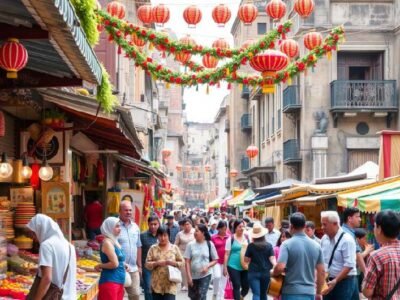The phrase was previously applied to sociology, the first “science of society,” which was founded in the nineteenth century.
Social science may help us understand how our own society works, from the causes of unemployment to what promotes economic progress, as well as how and why people vote and what makes people happy.
Social scientists look at every facet of society, from historical events and achievements to human behaviour and group connections. Their findings shed light on the various ways in which individuals, organisations, and institutions make decisions, exert power, and adapt to change.
It goes without saying that class ten is one of the most pivotal years in a student’s academic career. Their grades may play a significant role in determining the direction of their future careers. The possibility of failing leaves them under a lot of stress and fear.
An individual’s marks in class 10 are the deciding criteria in deciding the institution they want to go to for their post-secondary studies.
One of the subjects that are considered hard and very time taking is Social Studies. SST scares a lot of candidates because of its lengthy nature. But in actuality, SST is an easy way to get a good percentage.
We are here to answer one of the most asked questions about SST.
CBSE Class 10th Syllabus For Social Science
- What are all the Chapters and what are they about?
The NCERT syllabus is important in preparing students for their future education since it gently grazes through all important areas that may become significant in the student’s future field of interest.
History
The Rise of Nationalism in Europe
French Revolution and
the Idea of the Nation
The Making of Nationalism in Europe
The Age of Revolutions: 1830-1848
The Making of Germany and Italy
Visualizing the Nation
Nationalism and Imperialism
The fundamental reasons for nationalism in Europe are discussed in this chapter, as well as the French Revolution and Nationalism and Imperialism. It also looks at the rise of nationalism in Europe following the 1830s. It emphasizes how revolutionary ideas spread over France, Italy, Germany, and Greece. Furthermore, it concentrates on the characteristics of Poland, Hungary, Italy, Germany, and Greece on the ground.
- The Nationalist Movement in Indo-China
This chapter focuses on French colonization in Indo- China. It also discusses the Vietnamese liberation movement before and after the US invasion, as well as the role of women in the conflict.
- Nationalism in India
This topic holds significant importance in our history. Freedom struggles like the Khilafat movement and the Non-cooperation movement are talked about in this chapter. It also mentions some of the preposterous acts passed by the British government like the Rowlatt Act.
- Making of a global world
This chapter tells us about the world before all the technological development.
A few key points in these chapters are the topics of Trades, Food travel, Technology, etc.
- The Age of Industrialization
Before the Industrial Revolution
Hand Labour and Team Power
Industrialization in the colonies
Factories come up
The Peculiarities of Industrial Growth
Market for Goods
- Work, Life, and Leisure
- Print Culture and the Modern World
- Novels, Society, and History
Geography
- Resources and Development
Types of Resources
Development of Resources
Resource Planning in India
Land Resources
Land utilization
Land Use Pattern in India
Land Degradation and Conservation Measures
Soil as a resource
Classification of Soils
Soil Erosion and Soil Conservation
- Forest and Wildlife Resources
- Water Resources
Water Scarcity and
The Need for Water Conservation and Management.
Multi purpose river projects
and Integrated Water Resources Management
Rainwater Harvesting
- Agriculture
Types of Farming
Cropping Pattern
Major Crops
Technological and Institutional Reforms
Impact of Globalisation on Agriculture
- Minerals and Energy Resources
What is mineral ?
Mode of occurrence of Minerals
Rock Minerals
Conservation of Minerals
Energy Resources
Conservation of Energy Resources
- Manufacturing Industries
Importance of Manufacturing
Contribution of Industry to National Economy
Industrial Location
Classification of Industries
Spatial Distribution
Industrial pollution and environmental Degradation
Control of Environmental Degradation
- Lifelines of National Economy
Transport- Roadways, Railways, Pipelines, Waterways, Airways
Communication
International Trade
Tourism as a Trade
Political Science
- Power-Sharing
Case studies of Belgium and Sri Lanka
Why power Sharing is desirable
Forms of Power Sharing
- Federalism
What is Federalism
What makes India a Federal Country ?
How is Federalism practiced ?
Decentralization in India
- Democracy and Diversity
- Gender, Religion and Caste
- Popular struggles and Movements
- Political parties
Why do we need Political Parties?
How many Political parties should we have?
National Political Parties
Challenges to Political Parties
How can Parties be reformed
- Outcomes of Democracy
How do we assess Democracy’s outcomes
Accountable, responsive and legitimate government
Economic growth and development
Reduction of inequality and Poverty
Accommodation of Social diversity
Dignity and Freedom of the citizens
- Challenges to Democracy
What are the challenges that
Democracy faces in our country
and elsewhere?
What can be done to reform democratic politics?
How can democracy be more
democratic in its
practice and outcomes?
Economics
- Development
What Development promises
Income and other Goals
National Development
How to compare different countries or states?
Income and other criteria
Public Facilities
Sustainability of Development
- Sectors of the Indian Economy
Sectors of Economic Activities
Comparing the three sectors
Primary, Secondary and Tertiary Sectors in India
Division of sectors as organized and unorganized
Sectors in terms of ownership:
Public and Private Sectors
- Money and Credit
Money as a medium of exchange
Modern forms of money
Loan Activities of Banks two different credit in India
Self help Groups for the Poor
- Globalisation and the Indian Economy
Production across countries
Interlinking Production across Countries
Foreign Trade and integration of markets
What is Globalisation?
Factors that have enabled Globalisation
World trade organization
Impact of Globalisation on India
The struggle for a fair Globalisation
- Consumer Rights
Disaster management
- Tsunami the Killer sea Waves
- Survival skills
- Alternative Communication Systems
- Safe Construction Practices
- Sharing Responsibilities
- Planning Ahead












